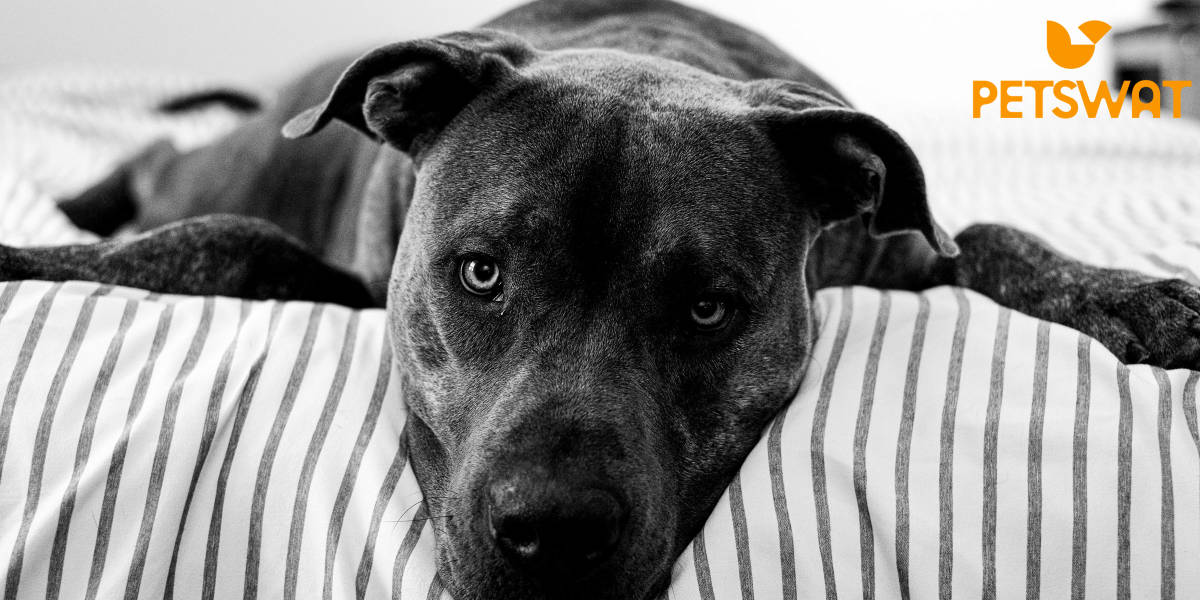Pitbulls are a popular breed of dog known for their muscular build and loyal nature. However, one aspect of owning a pitbull that many owners struggle with is their shedding. Why is my pitbull shedding so much?
Understanding pitbull shedding is important for several reasons. It can help you manage your pet’s shedding effectively, keep your home clean, and ensure the overall health and well-being of your furry friend.
Understanding the Biology of Pitbull Shedding: What You Need to Know
To understand pitbull shedding, it’s important to know how the shedding process works. Like all dogs, pitbulls have different types of hair on their bodies, including guard hairs and undercoat. The guard hairs are long and coarse, while the undercoat is soft and dense. The growth cycle of these hairs varies, with some hairs growing continuously while others have a specific growth phase followed by a resting phase before they shed.
Pitbulls shed throughout the year, but the amount of shedding can vary depending on the individual dog. Some pitbulls may shed more heavily during certain seasons or in response to environmental factors such as temperature or stress. Regular brushing can help remove loose hairs and minimize shedding.
The Role of Genetics in Your Pitbull’s Coat and Shedding Habits
Genetics play a significant role in determining your pitbull’s coat color, texture, and shedding habits. Different genes control the production of pigments that give the coat its color, as well as the thickness and length of the hair. Some genes can also influence shedding tendencies.
Certain breeds are more prone to excessive shedding than others. For example, breeds with double coats, such as Siberian Huskies or German Shepherds, tend to shed more heavily than breeds with single coats like Greyhounds or Boxers. If your pitbull has a mixed heritage, it may inherit shedding tendencies from both parent breeds.
Factors that Influence Pitbull Shedding: Climate, Season, and Environment
Climate, season, and environmental factors can all influence the shedding patterns of pitbulls. Temperature and humidity play a significant role in regulating the growth and shedding of hair. In warmer climates, pitbulls may shed more to help regulate their body temperature. Similarly, during the spring and fall seasons, pitbulls may shed more heavily as they transition between their winter and summer coats.
Environmental factors such as stress, allergies, or exposure to certain substances can also trigger excessive shedding in pitbulls. For example, if your pitbull is allergic to certain foods or environmental allergens like pollen or dust mites, it may experience increased shedding as a result.
The Impact of Nutrition on Your Pitbull’s Coat and Shedding
Proper nutrition is essential for maintaining a healthy coat and minimizing shedding in pitbulls. A balanced diet that provides all the necessary nutrients can promote healthy hair growth and reduce excessive shedding. Nutrients such as omega-3 fatty acids, biotin, zinc, and vitamins A and E are particularly important for maintaining a healthy coat.
On the other hand, certain foods can trigger excessive shedding in pitbulls. Ingredients like soy, corn, or wheat can cause allergies or sensitivities that manifest as skin issues and increased shedding. It’s important to choose high-quality dog food that is free from potential allergens and provides the necessary nutrients for a healthy coat.
Grooming and Hygiene: How They Affect Your Pitbull’s Shedding
Regular grooming is crucial for managing pitbull shedding. Brushing your pitbull’s coat regularly helps remove loose hairs before they have a chance to shed all over your home. It also stimulates the skin and promotes healthy hair growth.
When brushing your pitbull, it’s important to use the right tools and techniques. A slicker brush or deshedding tool can be effective in removing loose hairs from the undercoat. Brushing in the direction of hair growth and using gentle, sweeping motions can help prevent discomfort or skin irritation.
Bathing your pitbull regularly is also important for maintaining a healthy coat and reducing shedding. However, it’s essential to use dog-specific shampoos and conditioners that are gentle on the skin and coat. Over-bathing can strip the natural oils from your pitbull’s skin, leading to dryness and increased shedding.
Health Issues that Can Cause Excessive Shedding in Pitbulls
Excessive shedding in pitbulls can sometimes be a sign of underlying health issues. Certain health conditions can affect the coat and skin health of your pitbull, leading to increased shedding. Some common health issues that can cause excessive shedding include allergies, hormonal imbalances, fungal or bacterial infections, and parasites such as fleas or mites.
If you notice excessive shedding accompanied by other symptoms such as itching, redness, hair loss, or changes in behavior, it’s important to consult your veterinarian. They can perform a thorough examination and run tests to determine the underlying cause of the shedding and recommend appropriate treatment options.
The Importance of Regular Vet Checkups in Managing Pitbull Shedding
Regular vet checkups are essential for managing pitbull shedding and ensuring the overall health of your pet. During these checkups, your veterinarian can assess your pitbull’s coat and skin health, identify any underlying issues that may be causing excessive shedding, and provide appropriate treatment options.
Preventive measures such as vaccinations, flea and tick prevention, and regular grooming can also be discussed during these checkups. Your veterinarian can provide guidance on the best practices for managing your pitbull’s shedding based on their individual needs.
Shedding vs. Hair Loss: How to Tell the Difference and What to Do
It’s important to differentiate between normal shedding and abnormal hair loss in pitbulls. Shedding is a natural process that occurs as part of the hair growth cycle, while hair loss can be a sign of an underlying health issue. Normal shedding is characterized by the presence of loose hairs that can be easily removed with brushing or grooming. Hair loss, on the other hand, involves the loss of patches of hair or thinning of the coat.
If you notice abnormal hair loss in your pitbull, it’s important to consult your veterinarian. They can perform diagnostic tests to determine the underlying cause of the hair loss and recommend appropriate treatment options. Treatment may involve addressing any underlying health issues, adjusting the diet, or using medications or topical treatments to promote hair regrowth.
Tips and Tricks for Managing Your Pitbull’s Shedding at Home
There are several tips and tricks you can try at home to manage your pitbull’s shedding effectively. Regular grooming is key, so make sure to brush your pitbull’s coat at least once a week to remove loose hairs. Using a deshedding tool or slicker brush can be particularly effective in removing loose hairs from the undercoat.
In addition to regular brushing, you can also try using home remedies to reduce shedding. Adding omega-3 fatty acid supplements to your pitbull’s diet can promote healthy skin and coat. Regularly bathing your pitbull with dog-specific shampoos and conditioners can also help keep their coat clean and minimize shedding.
Lifestyle changes can also play a role in managing your pitbull’s shedding. Providing a balanced diet that is rich in nutrients can promote healthy hair growth and reduce shedding. Ensuring your pitbull gets regular exercise and mental stimulation can also help reduce stress levels, which can contribute to excessive shedding.
When to Seek Professional Help for Your Pitbull’s Shedding Issues
While most cases of shedding in pitbulls are normal, there are times when professional help may be necessary. If you notice excessive shedding accompanied by other symptoms such as itching, redness, hair loss, or changes in behavior, it’s important to consult your veterinarian. They can perform a thorough examination and run tests to determine the underlying cause of the shedding and recommend appropriate treatment options.
In some cases, you may need to consult a professional groomer or a veterinary dermatologist for specialized care. A professional groomer can provide expert advice on grooming techniques and products that can help reduce shedding. A veterinary dermatologist specializes in diagnosing and treating skin and coat issues in animals and can provide advanced treatment options for managing excessive shedding.
Conclusion
Understanding pitbull shedding is essential for maintaining a healthy and happy pet. By understanding the biology of pitbull shedding, the role of genetics, and the factors that influence shedding, you can effectively manage your pitbull’s shedding and ensure their overall well-being. Proper nutrition, regular grooming, and regular vet checkups are all important aspects of managing pitbull shedding. By following these tips and seeking professional help when needed, you can keep your pitbull’s shedding under control and enjoy a clean and healthy home.
Originally posted 2023-09-08 08:09:28.
Johny is a dedicated pet enthusiast, author, and the driving force behind the insightful content at PetSWAT. With a deep passion for animals and a wealth of knowledge acquired through years of experience, Johny brings a unique perspective to the world of pet care and companionship.


